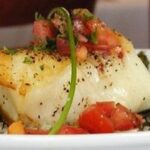Even when it’s not Italian night for dinner, a great way to savor your evening is to enjoy a classic antipasto plate. Antipasto is the Italian version of an appetizer and exotic starter, and it’s a plate you’ll find at the Italian household in place of tapas or hors d’oevres. The Spanish tapas craze has reached thousands of restaurants with the concept of small-plate dining, but antipasto has always had a place on the menu in a traditional Italian dinner.
Appetizers and starters are a great way to kick off a meal, but also work well as a snack on those long summer nights. Antipasto is a ‘conversation meal’, a chance to relax and look forward to the next dish while enjoying an assortment of gourmet foods and flavors. Italians start their meals with this signature platter, and it’s usually a mixture of meats and artisan breads. The most common assortment includes thinly sliced salami, prosciutto, cacciatore, galantina, and mortadella on the plate, as well as quail eggs marinated vegetables, and fresh-baked bread on top or on the side.
To make an authentic antipasto plate, you’ll need some choice cuts of Italian sausage and meats, thinly sliced mozzarella, and marinated artichokes, peppers, and zucchini. An antipasto spread is another option to have the unique tastes and flavors on hand to simply serve with bread. You’ll need a food processor to blend the ingredients into a pate-style consistency, but it’s easy to can or refrigerate this for an easy snack.
It’s best to narrow the antipasto plate down to three to five main items; too many, and you’ll end up with a pizza-like medley that may be hard to digest. You’ll need one main vegetable, one to two meats, and a couple of cheese options. A classic rustic Italian bread is the ideal accompaniment, but toasted focaccia works well too. Pick up a fresh loaf from your local organic bakery or Whole Foods market for maximum taste.
Marinating vegetables or steaming them in a balsamic vinaigrette are more ways to balance out the antipasto assortment, and you’ll need to use extra virgin olive oil (infused is best) to make the mix. Add some pine nuts or walnuts for a little more variety.
If you’re planning a large party or catering event, Antipasto is another great way to enjoy the starter on a larger scale. You can get more creative with the combinations in the larger plates, and offer 8 – 10 delicacies to decorate the platters with. Seafood made with seared cuts of tuna and salmon are one simple combination, but you might also serve fresh fruit with an assortment of nuts and meats.
Still, if food prep isn’t your forte and you’d rather avoid the elaborate presentation, learn from Libby Pelham with her Easy Antipasto Recipe that can be put together in less than an hour!




